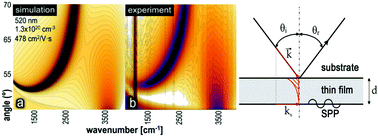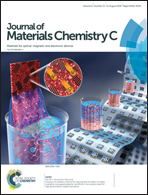As good as gold and better: conducting metal oxide materials for mid-infrared plasmonic applications
Abstract
The field of infrared surface plasmon resonance (IR-SPR) spectroscopy has the potential to enable unique applications and technologies in chemical sensing, heat harvesting, and infrared detectors. Finding an ideal material that can support a surface plasmon in the IR region has been a challenge for more than a decade. High carrier mobility, μ > 200 cm2 V−1 s−1, and tunable carrier concentration in the range 1019 < n < 1021 cm−3 are two necessary criteria for a spectrally narrow tunable plasmon resonance band in the IR. The ideal material would also be easy to prepare and robust in water and under ambient conditions. In this review, we highlight the development of the field over the last decade. We also provide a guide to explain the extension of visible plasmonics to the infrared region and the evolution of IR-SPR using conducting metal oxides (CMOs). CMOs are free electron conductors and most of them have no interfering electronic or vibrational transitions in the range of interest. Therefore, these materials also provide an excellent test of the fundamental physics of SPR, including the effects of surface fields, enhancement phenomena and the relationship between thin film epsilon near zero (ENZ) mode and the localized surface plasmon resonance (LSPR) in nanocrystals. In summary, we discuss the materials challenges and prospects for this field of research.

- This article is part of the themed collection: Recent Review Articles


 Please wait while we load your content...
Please wait while we load your content...
